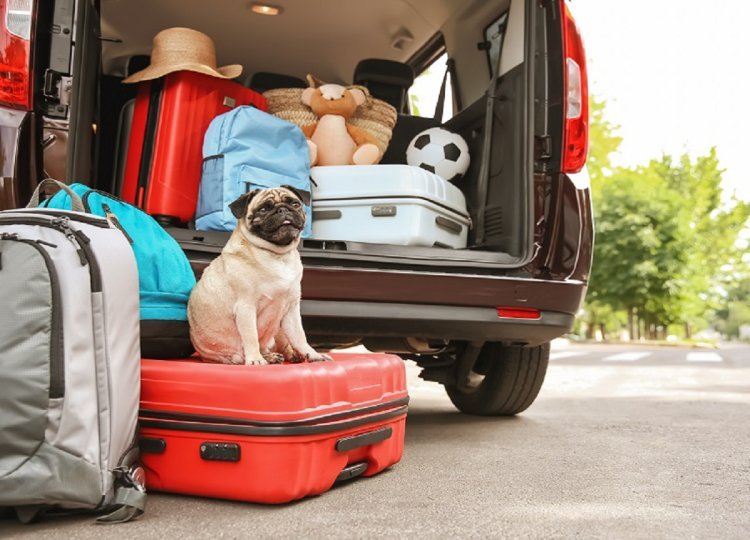Everything You Need To Know Before Air Travel For Pets
Specializing in domestic and international transport, the company ensures seamless pet relocation, adhering to all safety regulations and guidelines.

Air travel can be stressful for pet owners and their furry companions. Ensuring a smooth journey requires careful preparation, adherence to regulations, and prioritising your pet’s safety and comfort. A comprehensive guide covers everything you must know before air travel with your Pet Transport.
Understand Airline Policies
Make sure to use the following features before booking the flight.
Pet Types Allowed:
Some airlines restrict specific breeds or species, particularly brachycephalic (short-nosed) breeds like pugs and Persian cats.
Cabin vs. Cargo:
Small pets often travel in the cabin if their carrier fits under the seat, while larger pets may need to travel in the cargo hold.
Fees:
Depending on the pet’s size and travel location, airlines charge pet transport fees.
Contact the airline to confirm details and ensure you understand their requirements.
Check Destination Regulations
If travelling internationally, familiarise yourself with your destination's pet import/export regulations. These may include:
Health Certificates:
Many countries require a veterinary health certificate issued within a specific time frame before travel.
Vaccinations:
Rabies vaccinations and other immunisations may be mandatory.
Quarantine:
Some destinations enforce quarantine periods for arriving pets.
Consult the consulate or veterinary authority of your destination to avoid complications.
Visit the Veterinarian
A pre-travel vet visit ensures your pet is fit for air travel. Your veterinarian will:
- Conduct a health check.
- Administer necessary vaccinations.
- Issue a health certificate (if required).
- Provide advice on calming your pet if they are prone to stress or anxiety during travel.
Choose the Right Travel Crate
A suitable crate or carrier is essential for your pet’s safety and comfort. Follow these tips:
Size:
The crate should allow your pet to stand, turn around, and lie down comfortably.
Ventilation:
Ensure adequate airflow with mesh sides or ventilation holes.
Durability:
Opt for airline-approved crates made of sturdy materials with secure locks.
Comfort:
Line the crate with absorbent pads, and include a familiar blanket or toy to make your pet feel at home.
Prepare for Security Screening
During airport security screening, you may need to remove your pet from its carrier while the crate goes through the X-ray machine. To minimise stress:
- Keep your pet leashed or harnessed.
- Carry treats to reward calm behaviour.
- Familiarize your pet with being handled in busy environments beforehand.
Plan Feeding and Hydration
Proper feeding and hydration practices reduce the risk of discomfort or accidents during the flight:
- Feed your pet a light meal four to six hours before departure.
- Avoid giving food immediately before the flight to prevent motion sickness.
- Provide water, but ensure the bowl is spill-proof. Many crates have built-in water dispensers for easy access.
Train and Acclimate Your Pet
Help your pet feel comfortable with their crate and the travel process:
- Allow them to explore and spend time in the crate before the trip.
- Take short car rides with your pet in the crate to mimic travel conditions.
- Use positive reinforcement to associate the crate with a safe, pleasant space.
Consider Weather Conditions
Extreme temperatures can pose risks to pets travelling in the cargo hold. Airlines often restrict pet travel during very hot or cold seasons. For optimal conditions, choose early morning or late evening flights in summer and midday flights in winter.
Pack Essentials
- Health and vaccination records.
- Identification tags with updated contact details.
- Leash, harness, and extra waste bags.
- Any prescribed medications.
- A small supply of your pet’s regular food.
Minimise Stress on Flight Day
Keep your pet calm and comfortable on the day of travel:
- Exercise your pet beforehand to help them relax.
- Tell to them calmingly and avoid unexpected movements.
- Arrive at the airport early to allow ample time for check-in and security procedures.
Post-Flight Care
Once you arrive, prioritise your pet’s well-being:
- Offer water and a small amount of food.
- Take them for a walk or allow them to stretch.
- Monitor for signs of stress or illness and consult a vet if needed.
Final Thoughts:
With careful planning and attention to your pet’s needs, air travel can be a safe and manageable experience. Always prioritise your pet’s health, safety, and comfort to ensure a smooth journey for both of you. Happy travels! Super Pet Travel is a dedicated pet transportation service committed to providing safe, Dog Transport Service comfortable, and reliable travel solutions for pets of all sizes and species. With a team of experienced professionals, Super Pet Travel handles every detail, from secure crate arrangements to navigating complex import/export documentation. Their mission is to prioritise the well-being and comfort of pets during transit, offering personalised care tailored to each pet\u2019s unique needs.
What's Your Reaction?













